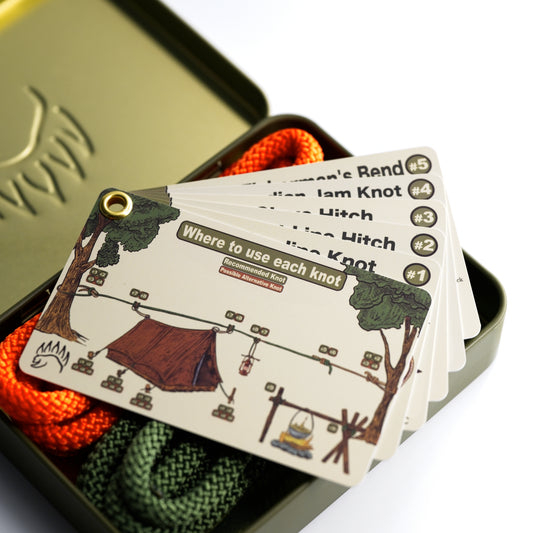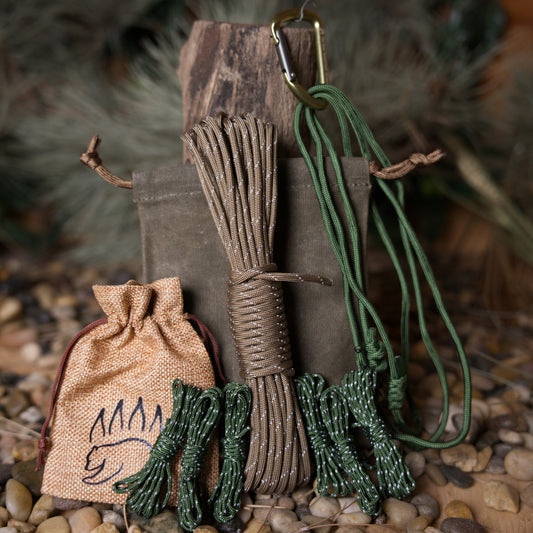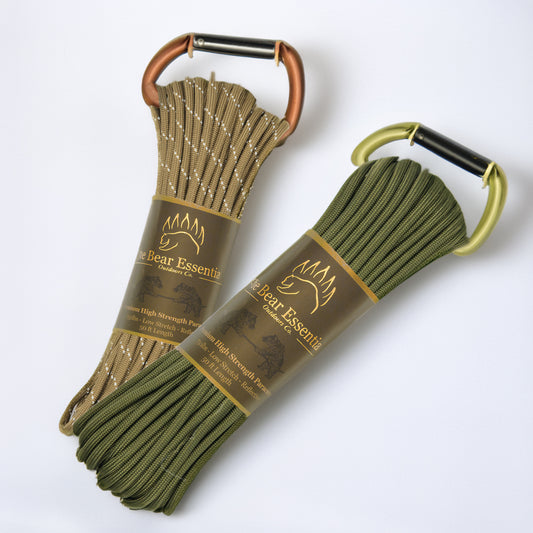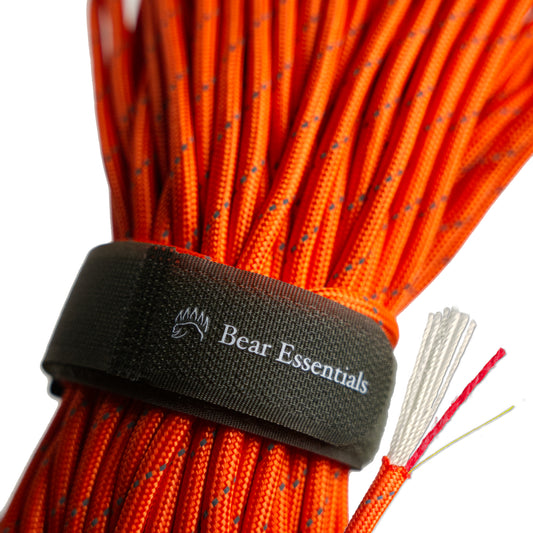How to Tie the Siberian Hitch
Usage
The Siberian Hitch is commonly used to secure a rope to a tree or post with a quick-release mechanism in bushcraft, camping, and utility tasks, ideal for temporary ties. It’s perfect for shelters and rigging thanks to its fast tying and easy release design.
Why Learn the Siberian Hitch?
Its quick-release design ensures rapid, reliable ties. This knot is a must for outdoor enthusiasts needing fast, secure hitches.
Common Uses
-
Bushcraft:
- Secures tarps or shelters to trees for quick setups.
- Ties ropes for hanging gear or setting traps.
-
Camping:
- Fastens guylines to stakes or trees, releasing easily.
- Creates temporary ties for camp organization.
-
Utility:
- Binds ropes to posts for short-term tasks.
- Secures loads or equipment with quick-release option.
ABOK Number
(Ashley Book of Knots)
Other Names
Category
|
Notable Features
- Instant release: Unties with one tug, ideal for quick takedowns.
- Easy to tie: Forms rapidly, even with gloves in cold conditions.
- Secure hold: Grips tightly under tension for temporary ties.
- Versatile use: Suits tarps, guylines, or utility rigging.
- Cold-weather friendly: Traditional knot used by Siberian nomads.
Variations
No true variations listed in the provided data. For added security, you can add an extra twist before slipping the bight, though this may slow release.
Similar Knots
Clove Hitch vs. Siberian Hitch
- Pros: Simpler and more secure for sustained loads.
- Cons: Harder to untie and lacks the quick-release feature of the Siberian Hitch.
Tumble Hitch vs. Siberian Hitch
- Pros: Also quick-release with a single tug.
- Cons: Less secure and more sensitive to accidental release than the Siberian Hitch.
History
The Siberian Hitch, also known as the Evenk Knot, is a traditional knot from Siberia, not listed in The Ashley Book of Knots but documented in outdoor and survival contexts. Used by the Evenk people, it was designed for rapid tying and untying in harsh, cold environments. Its growing popularity in bushcraft and camping reflects its efficiency for quick, temporary hitches.
Security Level
The Siberian Hitch provides reliable holding for light to moderate loads when tied correctly and kept under tension, ideal for temporary ties like shelters or guylines. It performs best with textured ropes. For heavy or critical loads, a more secure knot like the Clove Hitch or Round Turn and Two Half Hitches is recommended to ensure stability.
Downsides
- Slipping risk: May loosen without constant tension or with slick ropes.
- Accidental release: Sensitive to tugs on the bight, risking premature untying.
Structure
- Pass the rope around the object (e.g., tree or post).
- Cross the working end over the standing line to form a loop.
- Twist the working end around the standing line once, creating a second loop.
- Pass a bight of the working end through the second loop to create a slip knot.
- Tighten by pulling the standing line, then test by tugging the bight to release.
Pro Tip: Ensure the bight is long enough for easy pulling to release the hitch. Use a textured rope like nylon for better grip and practice the release motion to avoid snagging in wet or cold conditions.
FAQ
Is the Siberian Hitch strong enough for heavy tarps?
Yes, for light to moderate tarps under tension, but test the hold and avoid critical loads.
What’s the best rope for the Siberian Hitch?
Nylon or polyester ropes, like 6-8mm, provide good grip and flexibility.
How does the Siberian Hitch compare to the Tumble Hitch?
The Siberian is more secure but slightly trickier to tie, with a similar quick-release feature.
Can the Siberian Hitch be used in bushcraft?
Yes, it’s ideal for temporary shelters or gear ties needing fast release.
Why choose the Siberian Hitch over a Clove Hitch?
It’s faster to tie and unties with a tug, though less secure without tension.
Important Notes on Safety
Common failure points include a loose bight or insufficient tension, which can cause slipping or accidental release. Always verify the hitch is snug and secure before use, and avoid critical loads.
Check the rope for wear or slickness before tying.
Ensure the bight is properly slipped for instant release.
Practice in low-stakes settings to master tying and releasing.







